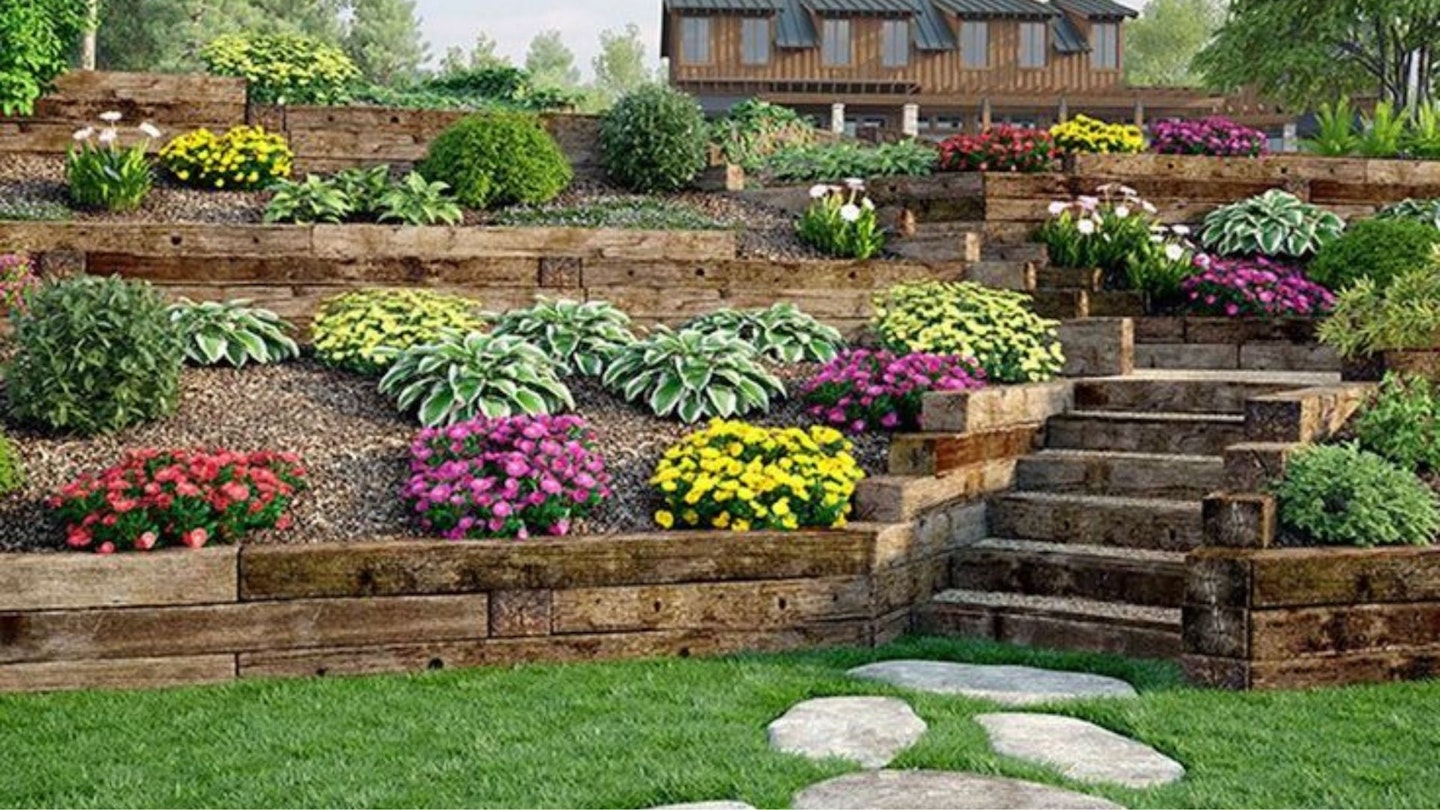If you have a sloped garden, you may find it tough to find inspiration for your outdoor space. While not everyone is blessed with the perfect garden, there are always tips and tricks to make your space your own. Flattening a garden can be expensive, and some plants just won't look right. However, there are many benefits to a sloped garden.
Scroll down for our sloped garden ideas that will help you counter the issues you find in your garden and allow you to embrace its perks.
Sloped garden ideas
Add raised decking
We’ve written before about how raised decking can transform a garden, and a sloped garden is no exception. Tiered decking is a great way to call attention to the incline of a garden, and by emphasising the different heights of the space you can create a really interesting garden design. You can choose tiered decking to follow the natural slant, or have a raised platform at the lowest point for that added drama.
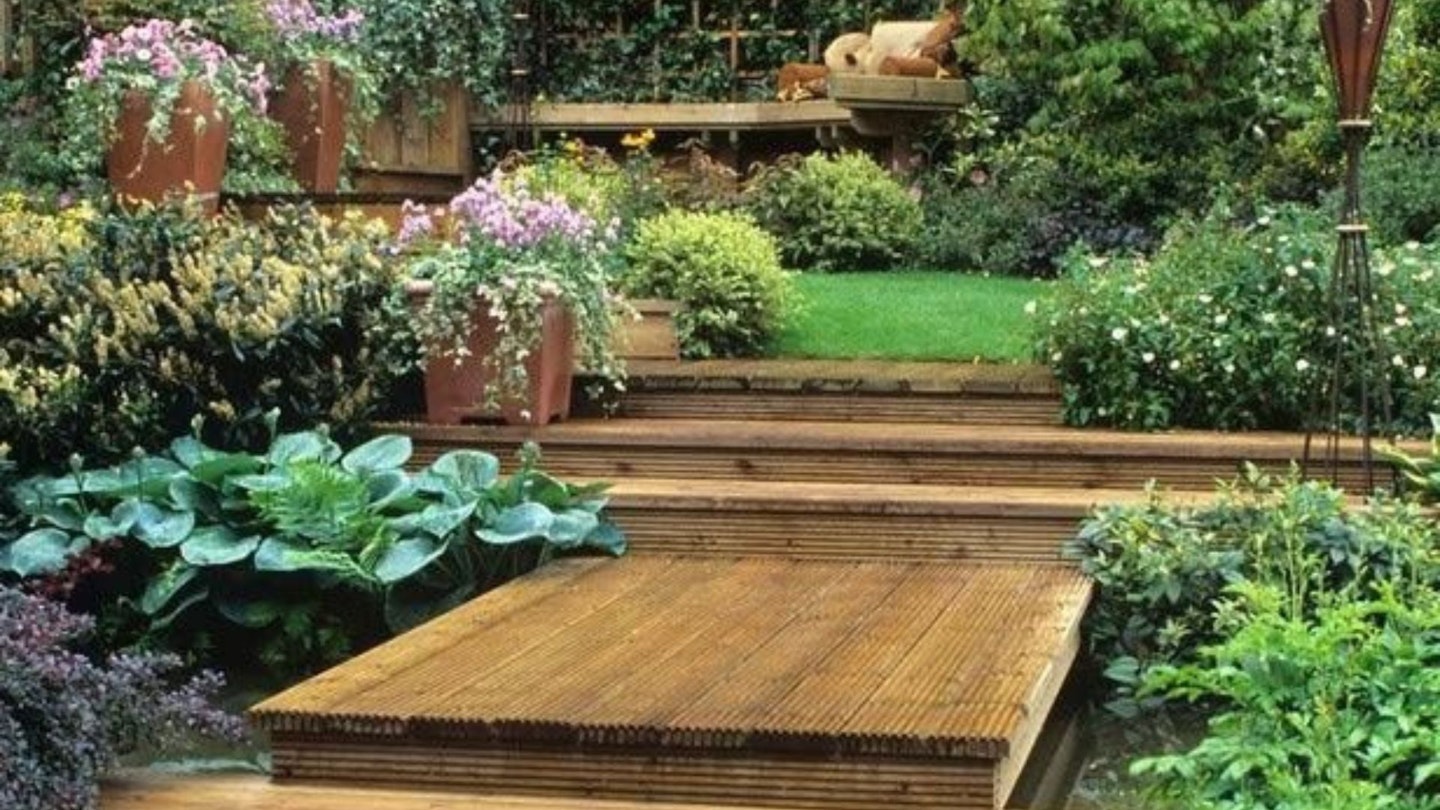
Section off a raised seated area
If you don't have the time or the budget to cover your garden in new decking, a great sloped garden idea can be raising up a single area and creating a private seated area. If you're not a fan of decking in general, try using stone or tiles. This will be especially useful for warmer months when you want to get the most of your sun.
Create a tiered garden
Lean into the slope by playing with heights and planting a mixture of taller trees with shorter plants. With just a little more attention to what you’re planting, you can create new dimensions in your garden. Wildflowers are highly recommended for sloped gardens. Specifically, perennial wildflowers are vital- if you go with seasonal flowers, come winter there will be nothing there to hold the soil in place. Wildflowers are also more low-maintenance and will add an untamed effect to your space. A popular sloped garden idea is buying a tiered planter to further emphasise the levels of your garden.
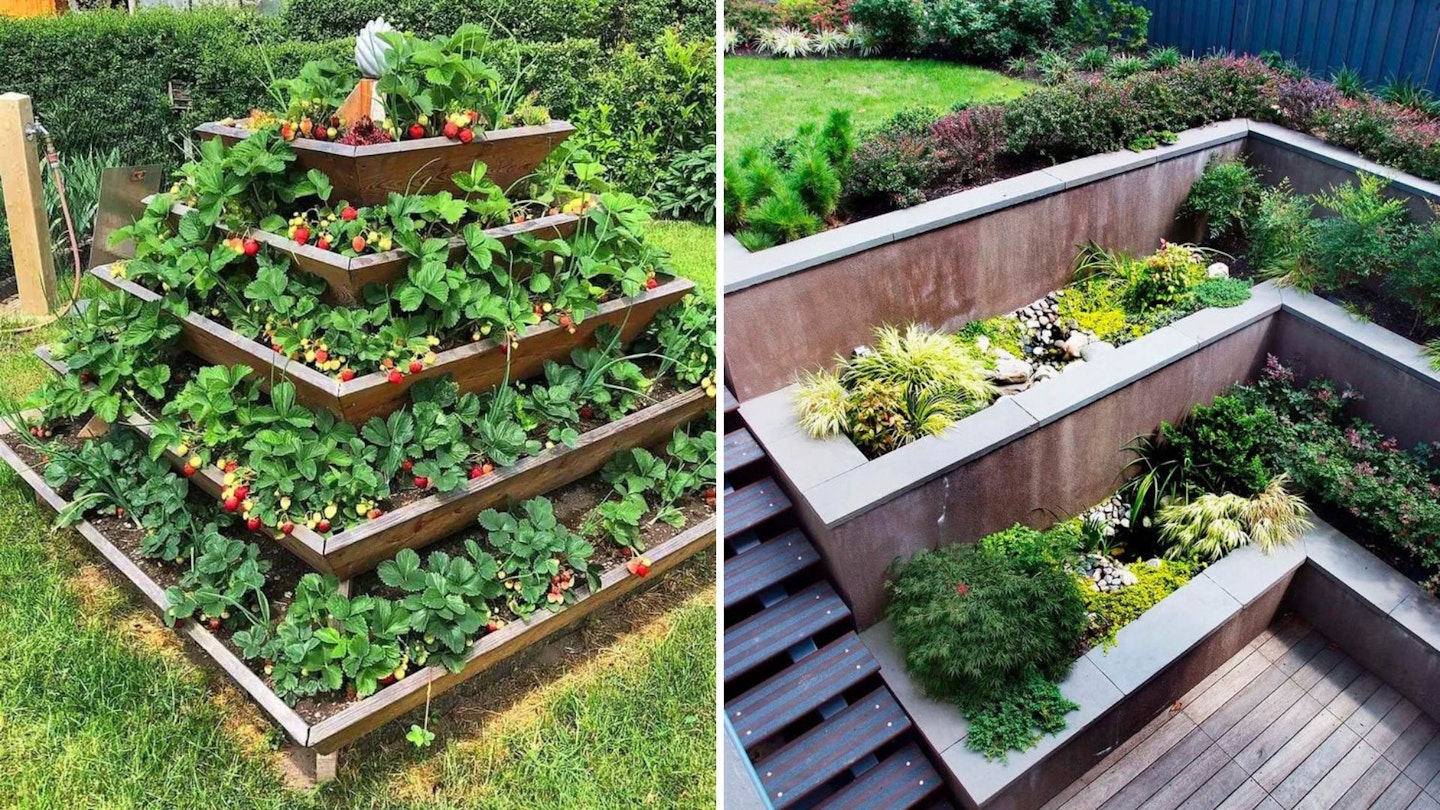
Add a water feature
Ponds- or, if you’re feeling adventurous, a waterfall- are great additions to sloped gardens. Many of these tips will recommend embracing the innate shape of your garden, and a pond will only enhance this natural look. Also, any water feature will double as a trick of the light to make your space appear bigger. That, and who doesn’t love the sound of a babbling brook?
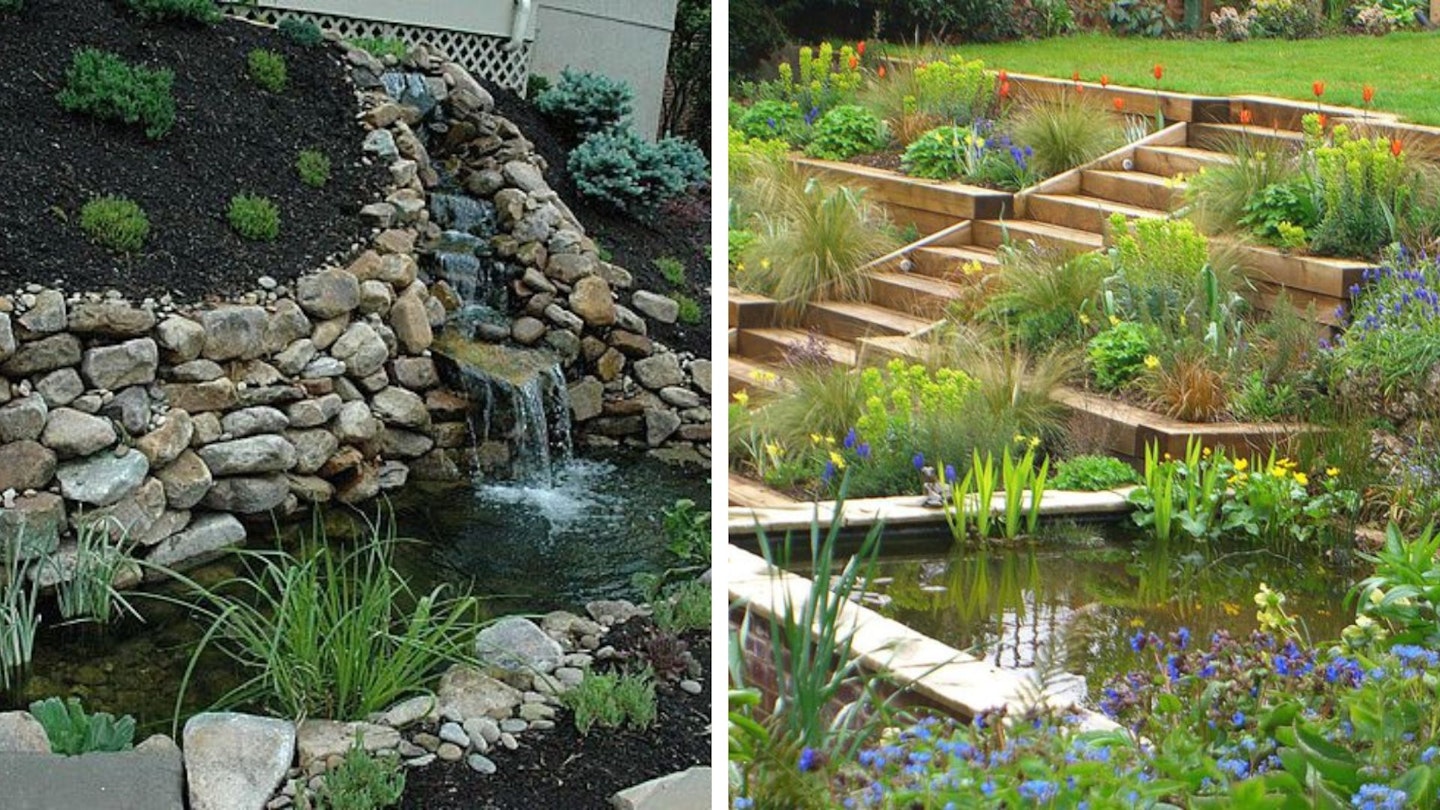
Build a stairway
Steps are an obvious yet effective transition between the higher and lower garden levels. Steps can also help you gently transition between tiers, so even a slight slope could benefit from a stairway. Your choice of materials will create very different effects- stone steps are ideal for a modern look, while grass-covered steps or decking will embrace the natural outdoorsy elements of your garden. If you’re a DIY aficionado, The Family Handyman provides a really useful step-by-step guide on how to build your own easy DIY steps on a slope.
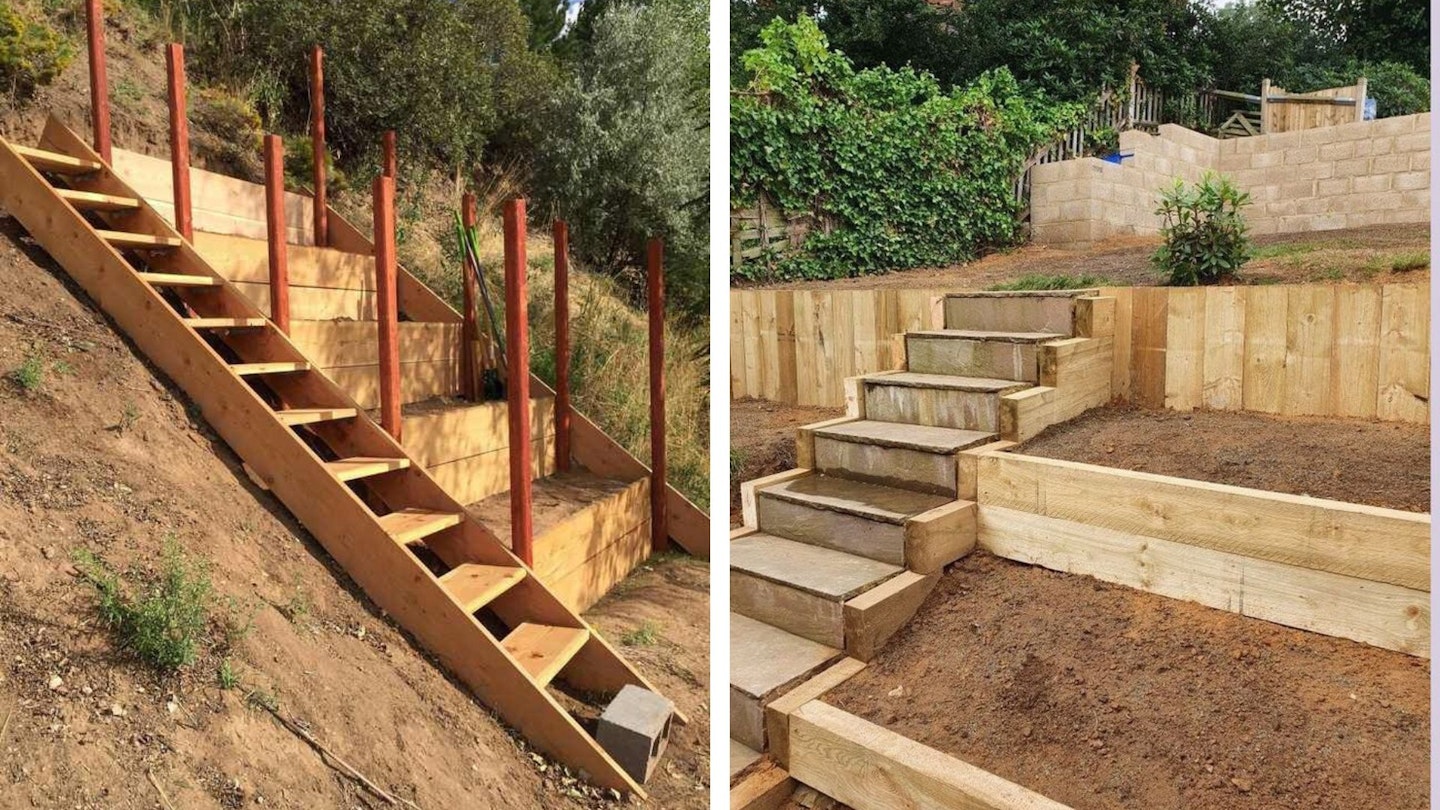
Make a statement with lighting
Lighting is a useful tool for anyone looking to redesign their garden. If you have a pergola or any railings, try festoon lights to generate a party atmosphere. Planted spike lights work well if you want to highlight your flowerbeds, plus these are usually affordable and easy to install. If you do choose to include steps in your sloped garden, be sure to light the way so you can use it even when the evenings get darker.
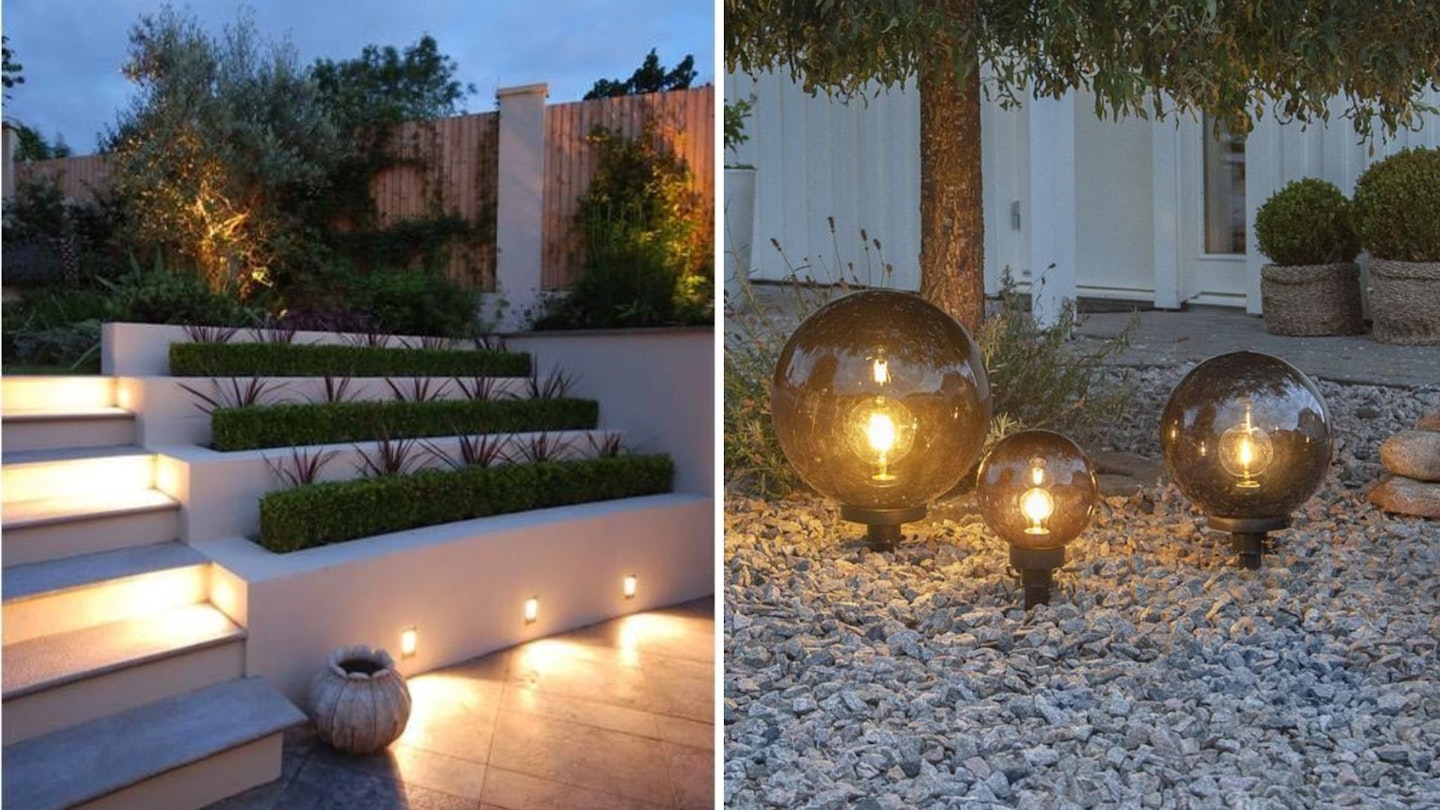
Find the right plants
It is important to select the correct plants for any garden, and sloped gardens can pose a challenge for plant lovers. Better Homes & Gardens writes: “Plant roots are very efficient at anchoring loose soil on a sloped flower bed,” meaning plants can help unify and level out a sloped garden. The Royal Horticultural Society has a guide on how to identify the best plants for steep banks or slopes, and even offers some recommended plants. Grass is not usually found in sloping gardens as it can be unsafe depending on how high your slope is, plus closely mown grass can be difficult to maintain, so getting creative with plants and shrubs is a great way to overcome this if you still desire greenery in your garden.
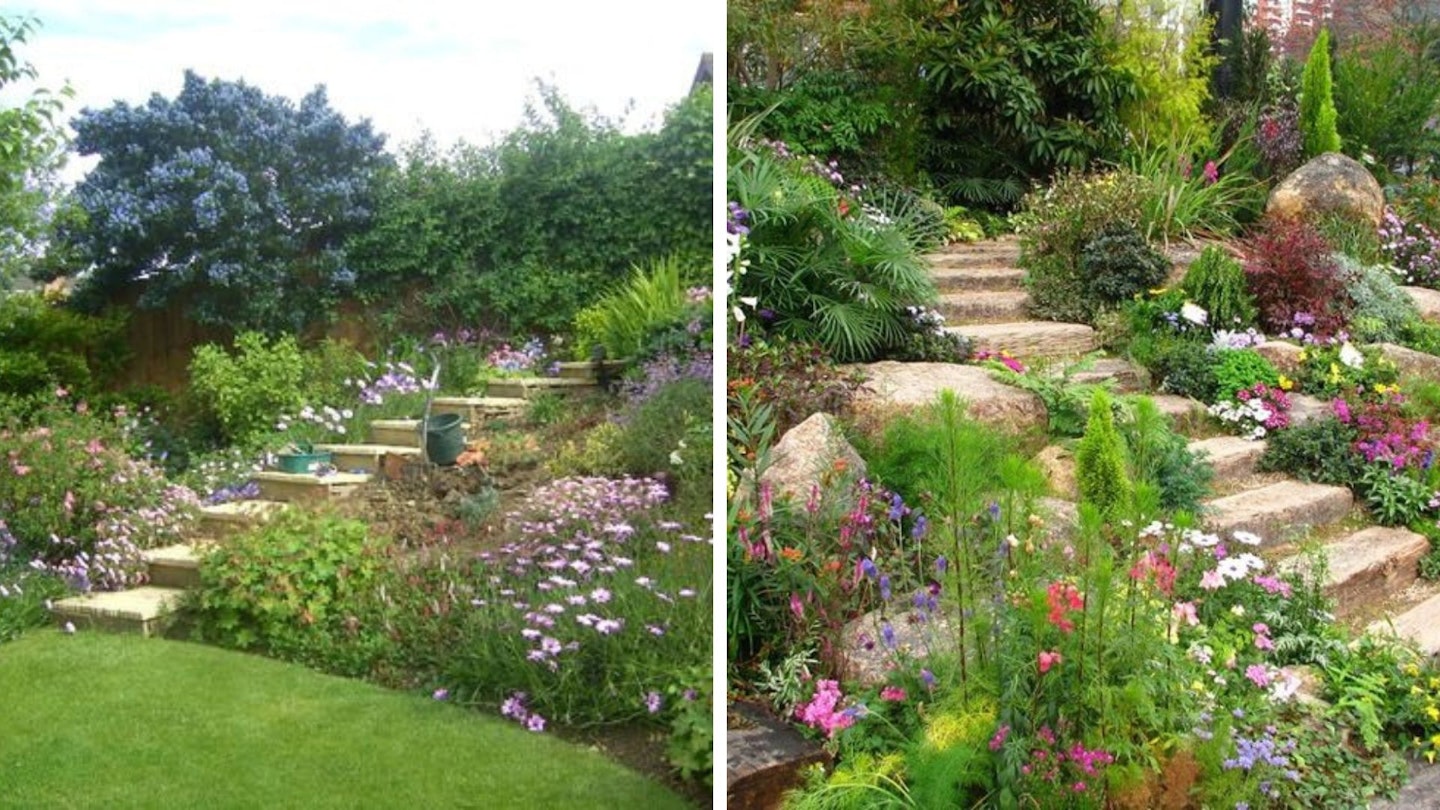
Add rocks
Adding boulders is a perfect sloped garden idea for those who prefer a less-uniform garden. Better Homes & Gardens suggest: “Arrange rocks into groups staggered informally for a natural look.” In a sloped garden, a man-made rock formation can emanate a natural mountain face. Rocks can be used alongside greenery to create a balanced look, or to accompany stone surfaces if you want an ultra-modern space.
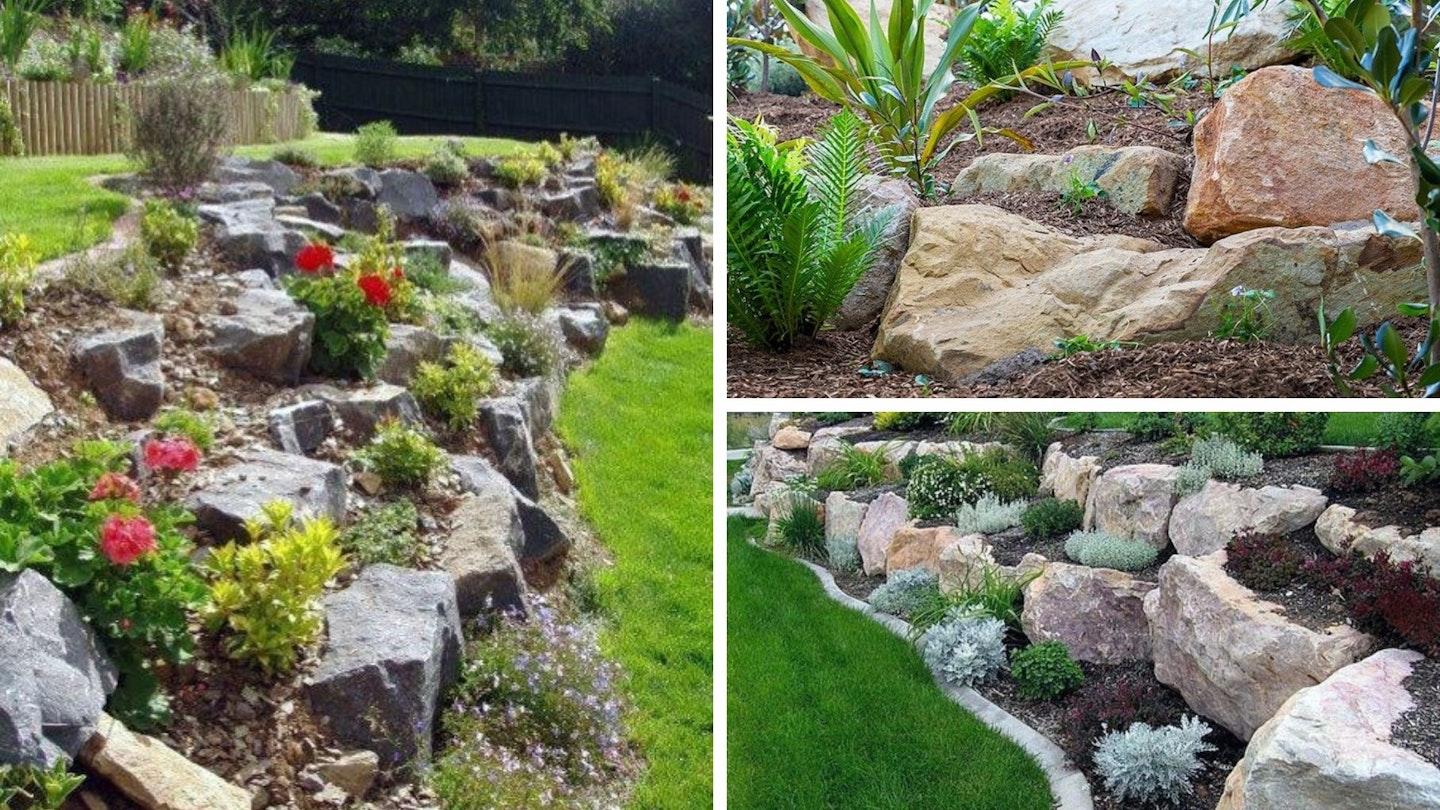
Build a wall
A sloped garden is the perfect opportunity to create little separate havens in your back garden. By emphasising the slant in your garden with a wall, it allows you to section off your garden into portions. You can even create a private, secluded section at the back of your garden for intimate al fresco dining.
The inclusion of a wall does not necessarily mean less greenery. Carlos Real, Lawn Care Expert and Managing Director at Total Lawn says: “A retaining wall is great for a hillside flower bed. Crevice-loving plants include trailing lobelia, rock cress, thyme, and candytuft.” You can grow flowers directly in your wall for a wild result. On a more practical note, walls can help prevent soil erosion, which is very common in sloped gardens.
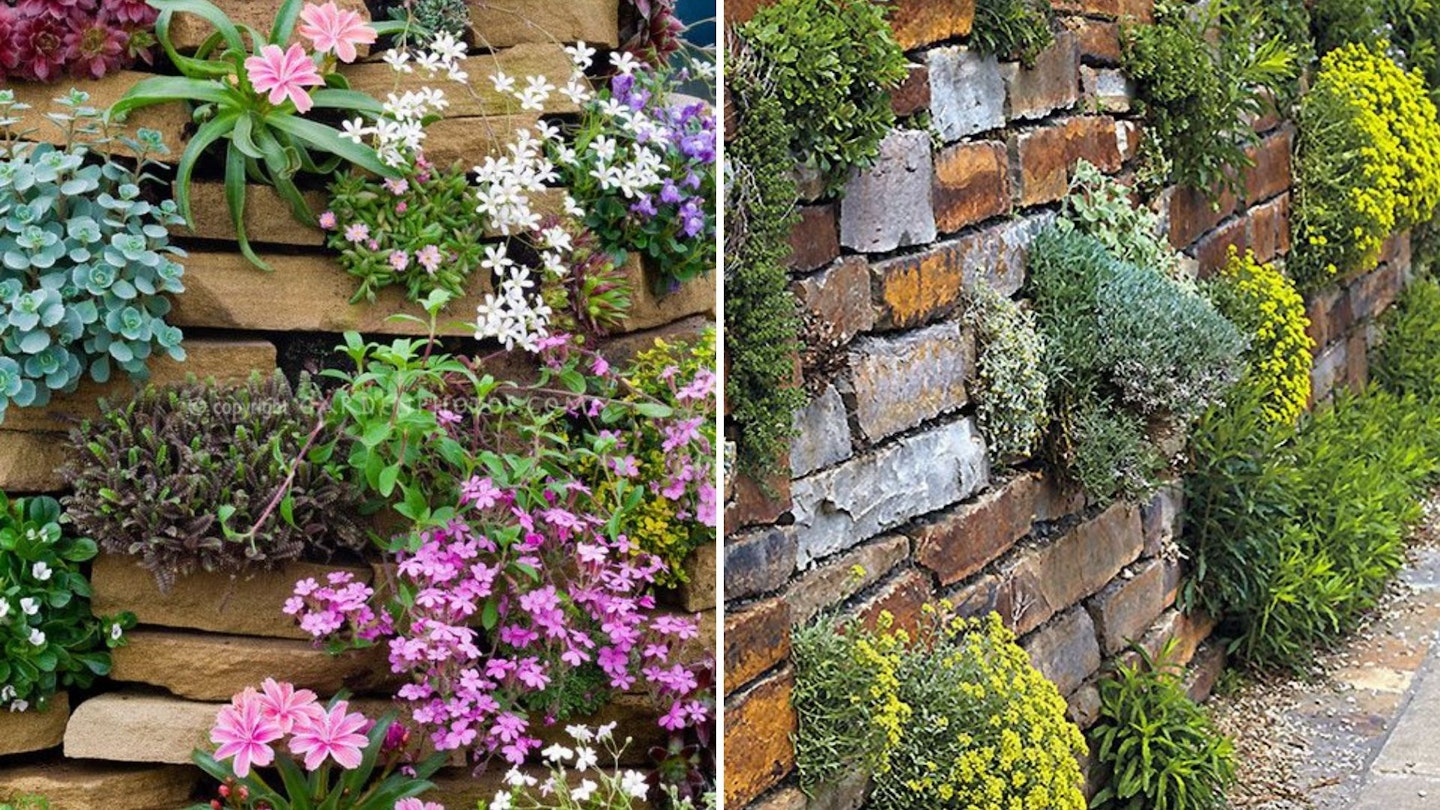
Create a path
Many choose to cut a path between garden levels using stones or even decking. This makes the slope of the garden appear intentional, and paths are always great for dividing spaces in a garden. You can have a path cut straight across the space, or create a meandering path that follows the natural curve of the slope. If you want to make a statement, try a zig-zagged path. Laying the stone in a herringbone or chevron formation will add further depth to a design.
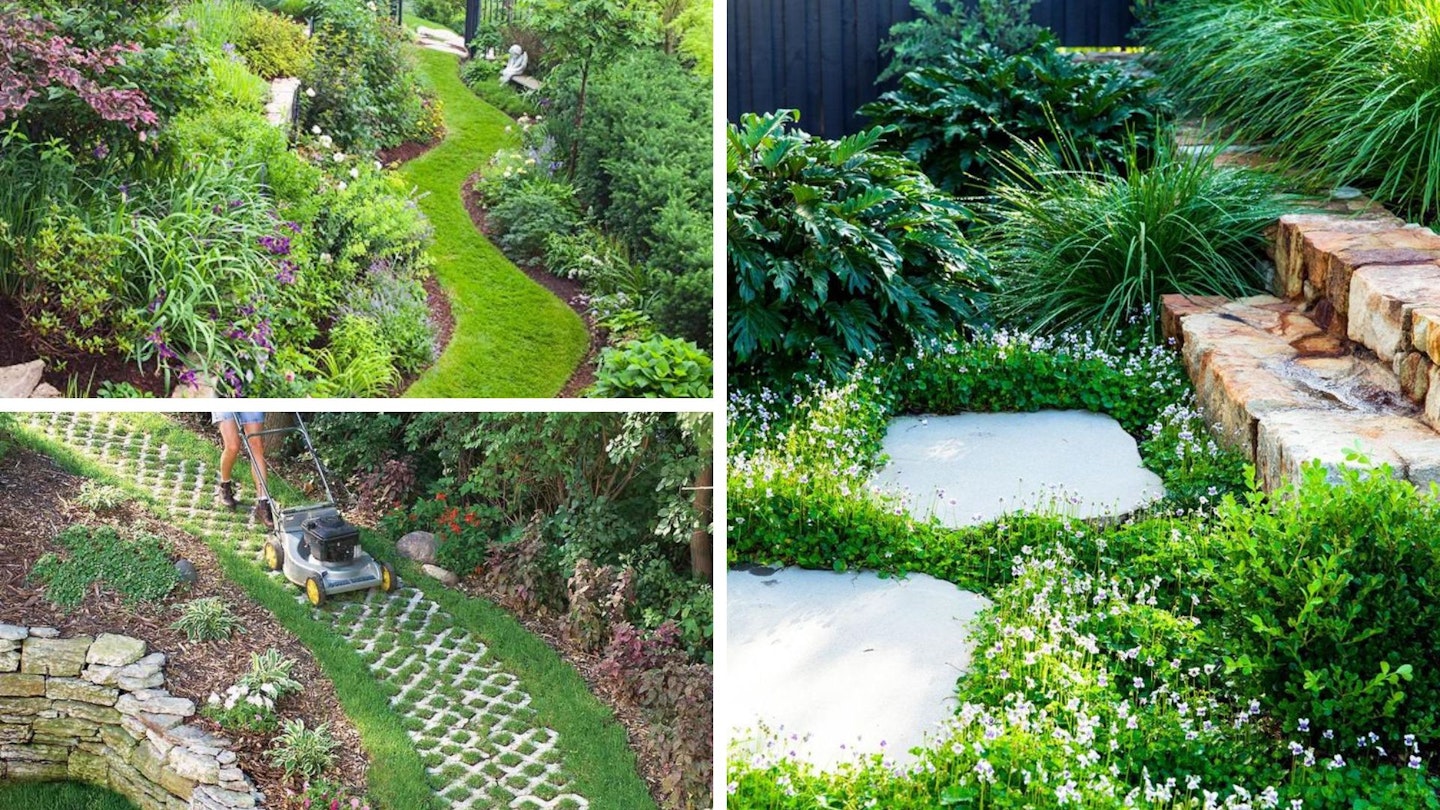
FAQs
What can I do with my sloped garden on a budget?
Many of the ideas in this article involve some landscape design, but not all. Instead of replacing half of your garden with decking and raised planters, try placing potted plants in those spaces. These will still ease the transition from lower to higher levels and won't cost a fortune. For lighting ideas, if you can't afford embedded lighting in your steps, planted spike lights are a great cost-effective alternative.
What are the disadvantages of a sloped garden?
As stated above, sloped gardens offer little opportunity for grass, but there are many alternatives to this. Wildflowers work very well, or go for a sleek, modern look by using pavement or stone instead of greenery.
Can a sloped garden be levelled?
Yes, it can, although flattening out a garden will need to be carried out by a professional, and this can cost anywhere between the range of £1000 to £10,000 depending on the size of your space. Hopefully the tips in this article provide some helpful and cost-effective sloped garden ideas as an alternative.
Sarah O’Byrne has been an editorial assistant at heat, Closer and Yours since May 2023. She has a BA in English with Film and an MA in Literature and Culture - both from University College Dublin.
To enjoy more regular stories just like this, become a Yours subscriber and become part of our fun and friendly community of like-minded readers.
